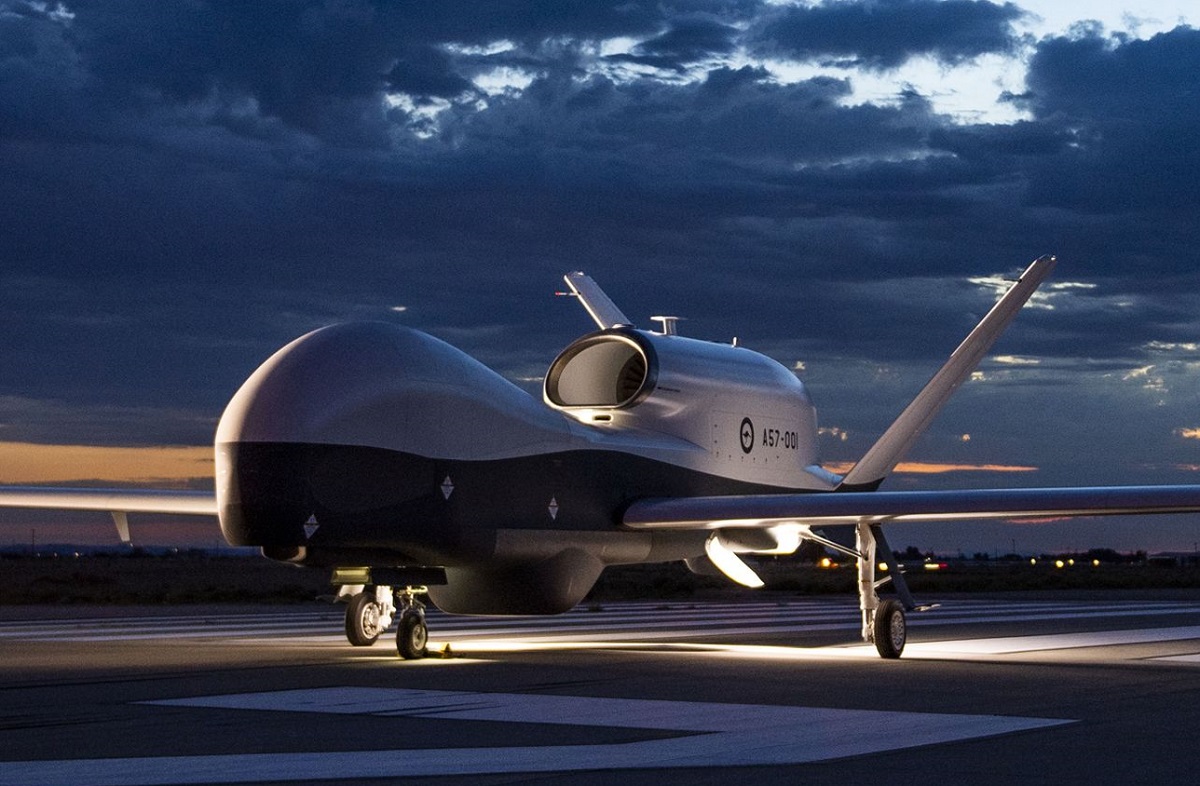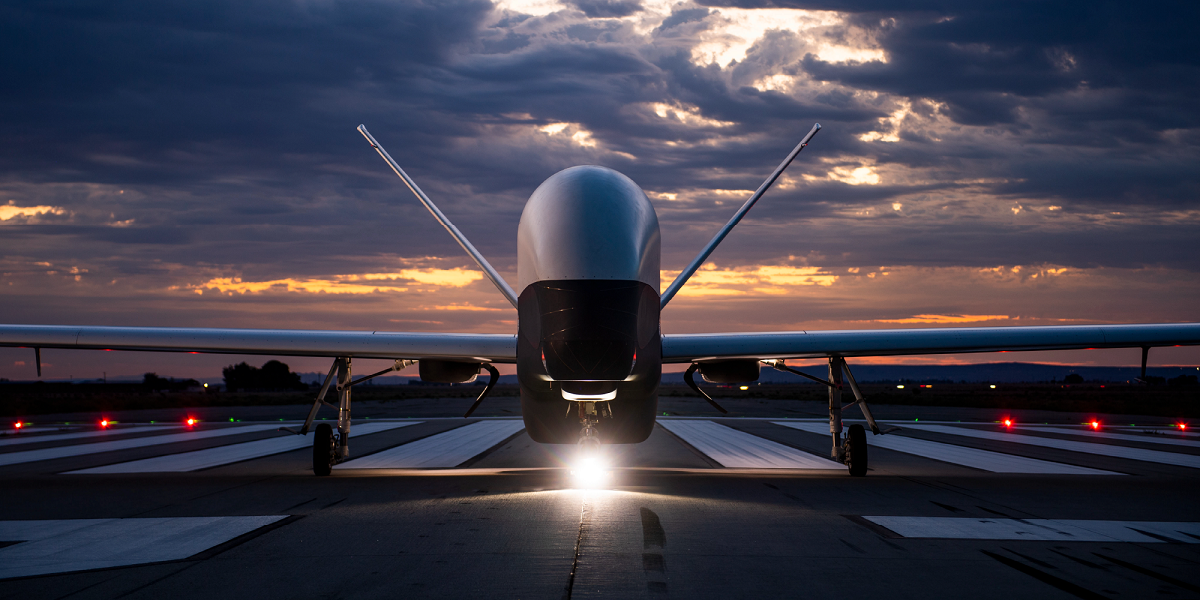By Robbin Laird
I have known Wing Commander Keirin Joyce for a number of years, and last spoke with him at length after he chaired last year’s Williams Foundation Seminar on Next Generation Autonomous Systems.
During the seminar, he highlighted an example of how current forces can use new uncrewed technologies to support the evolving kill web, in which a small team with ISR and C2 capability can inform a firing solution by a virtual task force firing solution provider.
WGCDR Joyce noted that in an Exercise Hamel held in 2018, a two-man Army team using a Black Hornet Nano UAV was able to identify a tank formation, and then with their radio able to pass that information on to the Royal Australian Air Force (RAAF) for a strike opportunity against that tank formation.
This example highlights certainly one role which uncrewed systems can play in providing ISR better labeled as information than intelligence surveillance reconnaissance because in this case you have the two-man team inside the Weapons Engagement Zone providing inputs to an external provider for a firing solution.
Now back in Australia for the next Williams Foundation Seminar, I had a chance to meet with the Wing Commander in person on a beautiful Spring Day. I asked him to provide an update since we last talked on shaping a way ahead for the RAAF in the UAS area.
According to WGCDR Joyce: “From an Air Force perspective, we have had some wins. The Loyal Wingman Ghost Bat program has been approved for expansion, that’s genuinely exciting. It’s an opportunity for us to get a highly automated system into the hands of our combat force, and experiment with, and find out what it can be good for and what perhaps it isn’t good for. And that will help us in defining the future air teaming system program, which is Air 6015.
“We need to enable learning by doing. And while we may make some clunky decisions about how we proceed, actual physical experience will contribute to enabling us to use these systems much faster than trying to design an elegant solution that’s going to be perfect, to be platinum plated. Because it probably won’t be perfect, this tech field moves so fast that the best aim point is gold plated, because there’s so much unknown about how to best use autonomy in Australian air power.
“From a Triton perspective, the Triton production line did not close as feared, so our first of three aircraft has rolled out of Northrup Grumman now. And our crews will commence training with the U.S. Navy soon. So that is exciting, as a bespoke niche capability in contributing to a piece of the maritime patrol and response capability set. The first aircraft should arrive in Australia in two years’ time, with crews fully calibrated, and then we’ll start our test and evaluation period.”
In 2017, I visited the base where both the P-8 and the Triton will be managed from.
This was what I wrote after that visit: “The P-8 and Triton integrated facility being built at RAAF Edinburgh, near Adelaide in South Australia. At the heart of the enterprise is a large facility where Triton and P-8 operators have separate spaces but they are joined by a unified operations centre.
“It is a walk through area, which means that cross learning between the two platforms will be highlighted. This is especially important as the two platforms are software upgradeable and the Aussies might well wish to modify the mission systems of both platforms to meet evolving Australian requirements.”
WGCDR Joyce noted that like the U.S. Navy, “we’re using the same crews – P-8 and Triton — at least to establish our initial operating capability. All the Triton operators will be qualified maritime patrol response officers, so the sharing of TTPs and forging the path forward for how we use this incredible increase in data and endurance should be maximized.”
He noted that “Right next to the P-8 building will be the Triton squadron headquarters, as well as building a new facility for our Distributed Ground Station Australia. Air 3503, which is where we’ll undertake level two processing, exploitation, and dissemination (PED), and beyond. Level two, three, four for the joint force. We will learn how to use Triton first and then work ways to support the joint force as well as civilian agencies with Triton-generated data.”
We then discussed how Triton fits into the overall evolution of ISR platforms in the ADF.
According to WGCDR Joyce: “In effect, Triton is a very low Earth orbiting satellite and it helps monitor a wide area of interest from the sensors because it operates at such a high altitude. We can move this sensor rich aircraft to a specific area of interest. And that is a huge advantage of Triton, but it is an expensive airplane, and we’ll only ever have so many, so we will have to closely manage those airplanes.”
We then discussed the cancelled Sky Guardian program.
As Joyce underscored: “The other thing that’s changed since the last conference, which was the cancellation of 7003, that project was buying an airplane that was a fraction of the cost of Triton, and subsequently we were scoping to buy many more of them.”
He did argue there was a need for a complimentary UAV capability to Triton. “Airplanes like a Triton are excellent in phase zero, but once the shooting starts, you need mass quickly, and you need airplanes that are not soaking up your entire budget quickly to fill those gaps.
“And that’s what we don’t have a plan for at the moment, which creates an operational capability gap. You need an airplane that’s got long endurance, the ability to carry the sensors for you, the ability to conduct strike, contributing to the kill chain at a minimum, but potentially with strike options itself.
“The ability to carry even cheaper, more expendable airplanes into combat and operating as a mother ship – also known as Air Launched Effects.”
“And you need to have them running at a level of automation that you can simply direct them to do missions. You don’t want a one to one pilot in the loop to conduct those operations, and that’s something we truly do need to scope into defence strategic review, or into projects that are already approved under FSP20, perhaps like AIR7555.
“We need additional aerial ISR, because once you transition from phase zero to phase one, when the shooting starts, you need platforms to be able to contribute to that, matching the con ops of your threat forces. Threat forces that will just keep shooting missiles until they hit. And I think that is a huge area of opportunity for Australia.”
We then discussed the importance of getting systems into operation to generate more rapid innovation as a means to build forward an expanded role for automated systems.
Joyce came from the Australian Army and returned to that experience to argue for a way ahead for the RAAF as well.
“I think Army learnt that lesson 15 years ago. At that time, Army decided it wanted to get a tactical UAS into service, and they went for a platinum solution but that didn’t work out. They then partnered with the U.S. Army, they lowered some of the capability requirements, but they got something in service fast – a gold plated solution – and started learning.
“And that’s been a really excellent model for the last decade, they learnt those lessons, they learnt what they wanted, what they didn’t want, what they wanted improvements in, and when they’ve gone to replace that project recently under LAND 129 Phase 3, they’re contracted now for a platinum solution.
“And what that means is that they’ve got a good chance of getting it, because they got something in the hands of 200 operators over the last decade, and they learnt the lessons, and they know what they want and how that will work.
“Perhaps something that Air Force is missing at the moment is we just don’t have a UAS squadron that’s got something off the shelf that we can partner with allies to learn lessons on and get our foot in the door so that we can expand when we need to.
“When somebody understands how to operate a UAV, how the controlling works, how the sensor links work, and perhaps how the kinetic links work, that enables you to have the ability to advance more quickly in the autonomous vehicle and systems area.”
WGCDR Joyce
WGCDR Joyce is currently Program Chief Engineer RPAS (MQ-4C Triton) at Royal Australian Air Force. He is an Australian Defence Force Academy graduate with an Honours Bachelor of Aeronautical Engineering.
WGCDR Joyce has spent the last 16 years in support of the ADF Uncrewed Aerial Systems (UAS) capability including deployment to Iraq and Afghanistan. WGCDR Joyce is a Chartered Professional Engineer, holds a Masters in Aviation Management (specialising in Human Factors), a Masters of Aerospace Engineering, a Masters in Military and Defence Studies, a Graduate Diploma in Secondary Education (Mathematics) and has researched part time as a Doctorate of Philosophy student through ADFA.
Now with the RAAF, before that he was the Australian Army UAS Sub-Program Manager responsible for all Australian Army UAS activities, including Army Drone Racing, and then the Royal Australian Air Force Remotely Piloted Aircraft Systems (RPAS) Sub-Program Manager.
Featured photos: Credit Northrop Grumman
And in a September 15, 2022 story published by the Australian Department of Defence, the first Triton for the RAAF was rolled off of the assembly line.
Australia’s first MQ-4C Triton Remotely Piloted Aircraft System has been rolled out today as part of a partnership between the Australian Department of Defence, the United States Navy and Northrop Grumman.
Head Air Force Capability, Air Vice-Marshal Robert Denney, said the partnership would support intelligence, surveillance and reconnaissance roles, as well as a broad range of joint effects fully integrated into Defence’s combat architecture.
“This partnership is pushing the boundaries of Air Power to pursue a truly advanced platform that will provide both a foundational capability and a growth path for future decades,” Air Vice-Marshal Denney said.
“Once in service, the remotely piloted High Altitude Long Endurance aerial system will significantly enhance our ability to persistently patrol Australia’s north and north-western approaches, in the south-west Pacific and south to Antarctica.
“Triton will complement the surveillance role of the P-8A Poseidon by providing sustained operations at long ranges, and undertaking a range of intelligence, surveillance and reconnaissance tasks.
“I look forward to exploring the ways in which Triton will enhance our Defence capabilities in the future.”
Head Aerospace Systems Division, Air Vice-Marshal Leon Phillips, commended Defence’s effective partnership with the United States Navy through the Triton Cooperative Program and with the manufacturer of the Triton, Northrop Grumman.
“This project is an excellent example of the successful partnership between our two nations and reflects the collaborative work between Defence and defence industry in delivering this strategic capability,” Air Vice-Marshal Phillips said.
“Defence will invest more than $900 million in Australian industry, including sustainment, ICT and facilities.”
Defence expects the first aircraft, of up to seven in total, to be completed and delivered to Australia in 2024.
Once delivered, the MQ-4C Tritons will be primarily based at RAAF Base Tindal in the Northern Territory while being controlled from facilities at RAAF Base Edinburgh..
For a discussion of next generation autonomous systems, see chapter four in the book below:
For an analysis of Triton within the Maritime Patrol Community and as part of the shift to a kill web force see chapter six in the following book:




